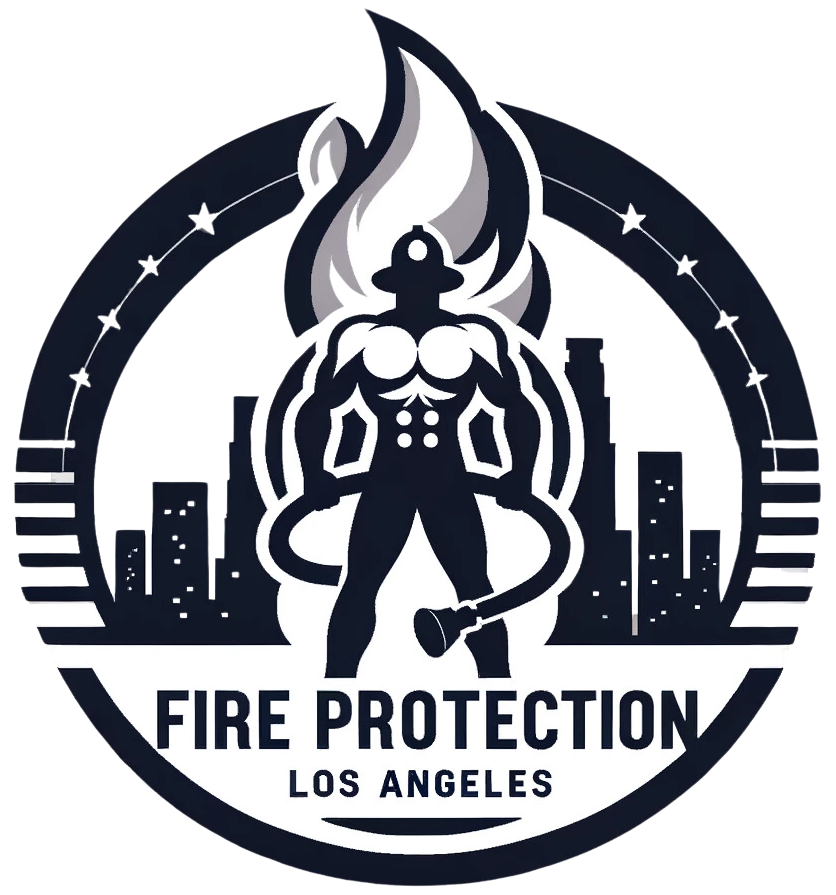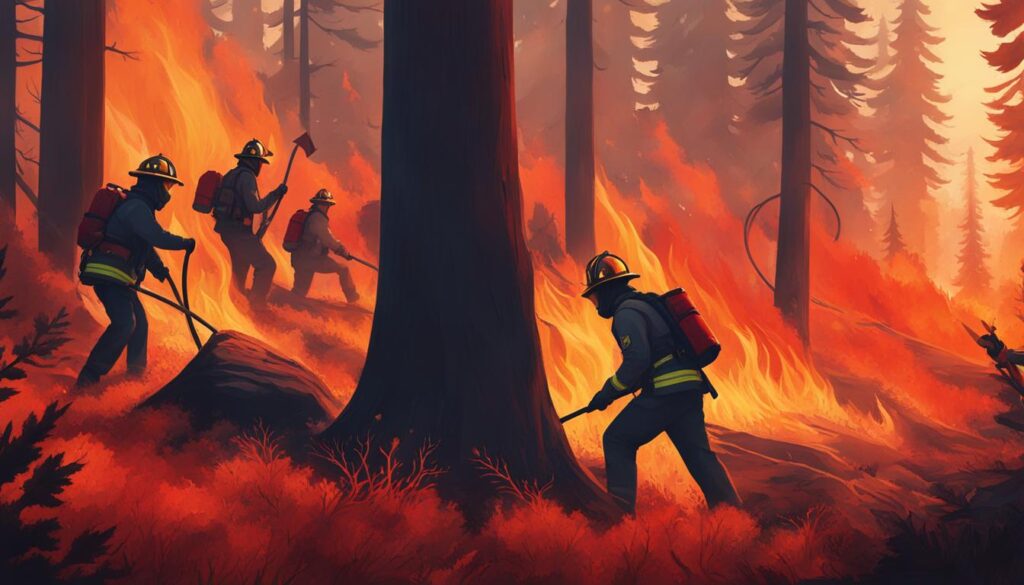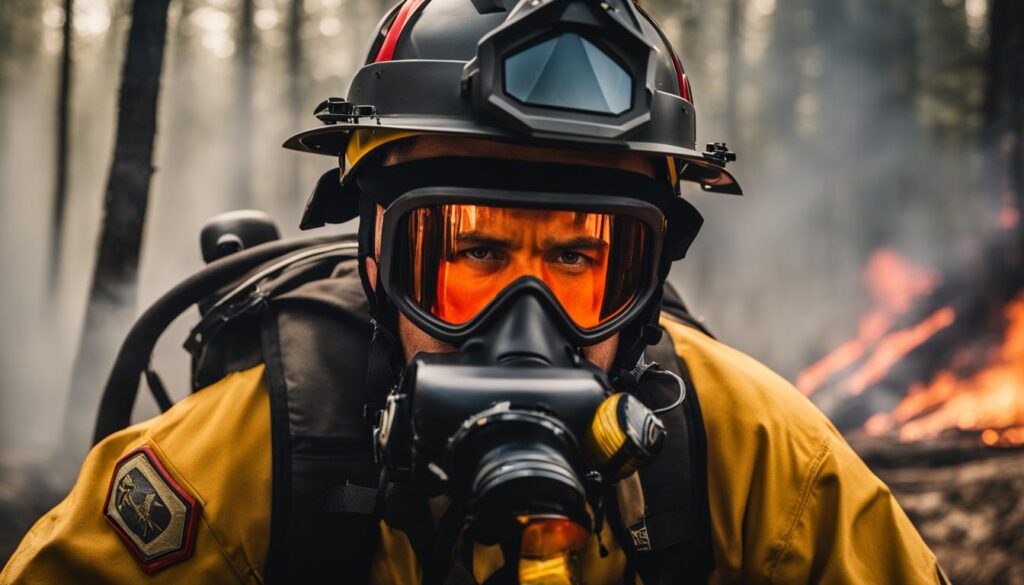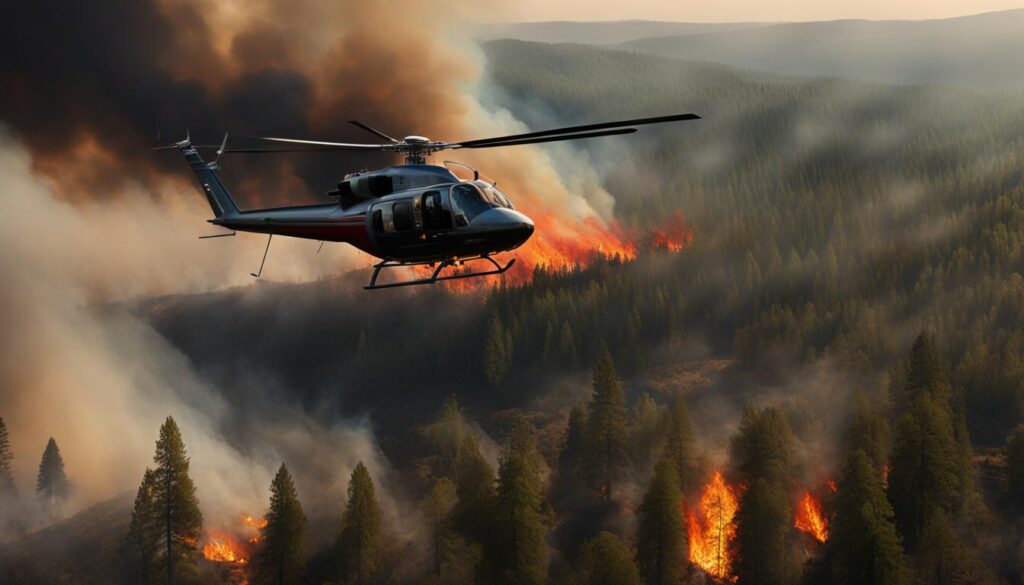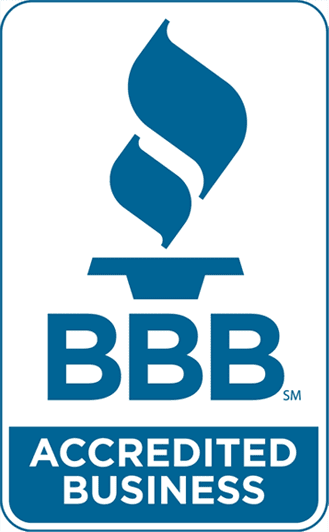The noble pursuit of preserving natural landscapes falls in the valiant hands of wildland firefighters, the unsung frontline heroes braving unforgiving elements to protect our treasured forests. These professionals play a pivotal role in forest conservation, tackling the flames that threaten biodiversity and ecosystems across various terrains. The Fire Protection Los Angeles (FPLA) epitomizes such commitment, embodying the spirit and grit required to defend and maintain the balance of our environment. Their tireless efforts not only safeguard the forests but also ensure the wellbeing of communities that fringe these wildlands.
Key Takeaways
- Wildland firefighting is critical for the preservation and protection of forests and natural resources.
- These firefighters are celebrated as frontline heroes due to their dedication and bravery facing dangerous conditions.
- Forest conservation benefits significantly from the rigorous and dedicated efforts of organizations such as FPLA.
- FPLA – Fire Protection Los Angeles represents a body of professionals deeply committed to forest conservation.
- Understanding the sacrifices and challenges faced by wildland firefighters is crucial in acknowledging their importance to ecosystem health.
The Critical Role of Wildland Firefighters in Ecosystem Management
Integral to the sustainability of our planet’s diverse ecosystems, wildland firefighters serve as crucial stewards of ecosystem management. Their role extends beyond merely battling flames; they employ strategic wildfire management techniques grounded in a rich understanding of fire ecology. These strategies aim not only to contain and extinguish fires but also to utilize them as a tool for maintaining ecological balance and biodiversity.
Ecosystem management necessitates a multi-faceted approach that merges scientific knowledge with on-the-ground expertise. Firefighters with comprehensive training in wildland fire operations apply this blend daily, ensuring they perform actions that serve the environment just as well as they protect human interests.
“The essential nature of fire in many ecosystems makes the role of wildland firefighters even more significant. They are not only controlling wildfires, they are literally shaping the landscape and influencing ecosystem dynamics.”
The principles of fire ecology indicate that fire is a natural process that can benefit the environment when managed correctly. The Fire Protection Los Angeles (FPLA) integrates these principles into their operations, revealing a bond between their firefighting efforts and the promotion of healthy ecosystems.
| Practice | Purpose | Benefits to Ecosystem |
|---|---|---|
| Prescribed Burns | Reduce fuel loads, simulate natural fire cycles | Enhanced biodiversity, forest health, and habitat restoration |
| Strategic Fire Suppression | Protect sensitive areas, control fire behavior | Preserved critical habitats, prevention of invasive species spread |
| Post-Fire Recovery | Rehabilitate burned areas, prevent erosion | Soil stabilization, water quality maintenance, vegetation regrowth |
The delicate balance maintained by the FPLA underscores how crucial ecosystem knowledge is in sustaining the health of forests and wildlands. Understanding the intricate dance between fire suppression and ecological support makes wildland firefighters indispensable to the larger narrative of conservation.
- **Ecosystem Management**: Firefighters’ actions are guided by a developed understanding of the ecosystems they operate within.
- **Wildland Fire Operations**: Skilled operations are orchestrated to both combat immediate fire threats and support long-term ecosystem health.
- **Wildfire Management**: Every intervention is an exercise in managing not just the fire but the future of the land it affects.
- **Fire Ecology**: Firefighters leverage their understanding of fire’s role within ecosystems to execute environmentally conscious strategies.
In summary, the function of wildland firefighters as environmental guardians is as complex as it is vital. Through the lens of fire ecology, they are caretakers who manage the land with fire, ensuring that each decision promotes ecosystem resilience and diversity.
Understanding Fire Behavior for Effective Wildfire Management
The mastery of fire behavior analysis is a cornerstone of modern wildfire management. For organizations like Fire Protection Los Angeles (FPLA), it is imperative to integrate predictive measures and advanced technology to enrich their wildland fire training and operational tactics. These efforts are crucial in fortifying wildfire suppression methods and enhancing the safety of both firefighters and the landscapes they defend.
Fire Behavior Prediction Models
At the heart of wildfire readiness lies a well-crafted methodology for anticipating fire movement—fire behavior prediction models. These sophisticated tools allow responders to simulate and interpret various wildfire scenarios, enabling a proactive stance against potential threats. FPLA’s approach weaves predictive modeling into their strategic planning, fostering a level of preparedness essential for effective wildfire response and management.
- Fire Spread Simulation: Predictive models utilize real-time data to simulate fire spread, guiding the deployment of firefighting resources.
- Wildfire Risk Assessment: These models also play a pivotal role in assessing regions at high risk for wildfires, guiding preventive measures.
By simulating different fire scenarios, firefighters can train for various real-world events, fostering adaptability and readiness in the face of unpredictable wildfire behavior.
FPLA’s incessant efforts to adopt and refine fire behavior prediction models underscore their dedication to saving lives, property, and ecosystems from the ravages of uncontrolled wildfires.
Utilizing Remote Sensing Technology for Fire Analysis
The advent of remote sensing technology has revolutionized wildfire mapping and overall wildfire response efforts. Cutting-edge tools such as satellite imagery, aerial reconnaissance, and drone technology provide invaluable insights into fire progression and hotspot identification. FPLA leverages these technologies to secure in-depth fire analysis and real-time situational awareness, which are fundamental to efficient and effective wildfire management.
Through the lens of remote sensors, FPLA obtains a comprehensive view of wildfire activity—enabling strategists to formulate precise suppression tactics with marked accuracy and speed.
| Technology | Application | Benefit to Wildfire Management |
|---|---|---|
| Satellite Imagery | Large-scale monitoring | Extensive coverage and early detection |
| Aerial Reconnaissance | Real-time observation | Dynamic fire tracking and behavior assessment |
| Drone Technology | Close-range inspection | Precision mapping and hotspot analysis |
The integration of these technologies reflects FPLA’s commitment to innovation in fight against wildfires. By keeping pace with the advancements in fire behavior analysis and remote sensing, organizations can significantly improve the efficacy and safety of their wildfire operations.
- Drone Surveillance: Drones furnish high-resolution data and imagery for fine-tuning fire suppression tactics.
- Real-Time Visibility: Remote sensing facilitates instant data transmission, instrumental for time-sensitive decisions in wildfire combat.
With the ongoing refinement in fire behavior prediction models and the strategic use of remote sensing technology, agencies like FPLA are better equipped to confront wildfires. This merger of knowledge, training, and tech assists in protecting ecosystems through informed and responsive wildfire management.
Fire Suppression Tactics in Wildland Settings
Firefighters specializing in wildland settings are equipped with a set of sophisticated fire suppression tactics designed to effectively manage and mitigate wildfires. The Fire Protection Los Angeles (FPLA) teams exemplify such expert approaches, employing techniques like fireline construction and vegetation management to control and extinguish wildfires.
The construction of firelines is a cornerstone tactic used to halt the advance of a wildfire. By removing fuel through an established perimeter, these barriers can significantly slow down or stop a fire’s progress. FPLA’s approach to fireline construction involves a meticulous process, which includes the use of specialized equipment and trained personnel who can recognize the most effective points to establish these lines.
FPLA’s strategic implementation of fireline construction is a testament to their adaptive management of dynamic wildfire scenarios, ensuring landscape and community safety through calculated interventions.
Alongside the physical labor put into cutting firelines, FPLA emphasizes the role of vegetation management as a preventive measure. By proactively reducing combustible materials through thinning and controlled burns around vulnerable areas, the potential intensity of wildfires can be mitigated. This form of vegetation management not only serves in the immediate sense for fire suppression but also plays a long-term role in maintaining the health of the ecosystem.
| Tactic | Objective | Methodology | Outcome |
|---|---|---|---|
| Fireline Construction | Containment | Cutting and clearing out vegetation to create a gap | Halted or slowed fire progress |
| Vegetation Management | Prevention | Thinning out combustible materials, executing controlled burns | Reduced fire intensity & healthier ecosystems |
| Natural Barriers | Suppression | Utilizing rivers, roads or rocky areas that lack fuel | Reducing reliance on human-made firelines and resources |
Furthermore, FPLA harnesses the power of natural barriers whenever possible. Streams, rocks formations, and roads can be incorporated into the wildfire strategy, decreasing the need for constructed firelines and saving valuable resources. The identification and use of these barriers are another key facet of their sophisticated approach to wildland fire suppression.
- **Strategic Planning**: Fire suppression actions are integrated with overarching land and resource management plans.
- **Resource Allocation**: Proper tools, personnel, and time are balanced to ensure effective fireline construction.
- **Environmental Stewardship**: The relationship between suppression tactics and ecosystem impact is carefully managed.
Overall, the success of firefighting efforts in wildland settings is underscored by adaptive strategies and a profound understanding of the landscape. FPLA’s dedication to merging science with strategy showcases their commitment to not just controlling wildfires, but also preserving the land they consume.
State-of-the-Art Equipment and Tools for Wildland Firefighting
The landscape of wildland firefighting has evolved significantly with the advent of cutting-edge firefighting equipment and tools. Today, these advancements are paramount to the effectiveness and safety of firefighters facing the ferocity of forest fires. Focused on innovation, the Fire Protection Los Angeles (FPLA) incorporates an array of sophisticated firefighting gear and technology into their operations, dramatically enhancing their capacity for wildfire suppression and management.
From GPS and Drones to Thermal Imaging Cameras
Modern wildland firefighters are more equipped than ever with an array of technology aimed at increasing efficiency and safety. At the core of field operations is GPS technology in firefighting, which enables precise navigation and mapping under the veil of smoke and rugged terrain. The importance of orientation and positional awareness cannot be overstated and directly contributes to the tactical placement of portable water tanks and deployment of fire suppression personnel.
Nothing quite captures the spirit of technological evolution like the utilization of drone surveillance in the battle against wildfires. Drones afford fire commanders a bird’s-eye view of the landscape, providing real-time intelligence that is critical to managing the complex dynamics of a raging fire. Equipped with thermal imaging cameras, these drones can detect hotspots invisible to the naked eye, guiding firefighters to critical areas and informing the effective deployment of fire extinguishing tools.
“The synergy between advanced technology and seasoned firefighting expertise is what sets us apart,” states an FPLA official. “Tools like GPS and drones are invaluable, but it’s the tactical knowledge of our crew that turns information into action.”
The integration of high-end equipment and informed decision-making processes empowers FPLA teams to navigate and suppress fires with an eye toward safeguarding both ecosystems and communities.
The Importance of Robust Communication Systems
Effective communication is the sinew that connects the muscle of firefighting operations, ensuring every movement is coordinated with the greater strategy in mind. Robust communication systems form the very backbone of incident response, facilitating a seamless flow of critical information across teams and over the chaotic symphony of a wildland blaze.
| Technology | Usage | Impact on Wildfire Response |
|---|---|---|
| GPS Devices | Navigation and Mapping | Enhanced situational awareness and strategic allocation of resources |
| Drone Surveillance | Real-time Aerial Assessment | Precise hotspot identification and improved safety for ground crews |
| Thermal Imaging Cameras | Heat Signature Detection | Early hotspot detection and night-time operations support |
| Communication Systems | Information Dissemination | Streamlined incident command and inter-agency coordination |
Under the ambit of such sophisticated gear lies the all-important Incident Command System (ICS) and fire incident command system, orchestrating both human and technological assets into a unified force against wildfires. The ICS is the framework within which all communication is contextualized, providing a template for action that ensures critical information is escalated to the right parties at the precise moment it’s needed.
- Incident Command System: Ensures effective operational control and coordination amongst diverse firefighting units.
- Robust Radios and Satellite Communication: Guarantees reliable communication even in the most remote and inhospitable fire zones.
- Real-Time Data Sharing: Empowers decision-making with timely and accurate information, a key for rapid response adaptation.
In summary, the arsenal of state-of-the-art firefighting gear and tools equipped by the Fire Protection Los Angeles (FPLA) has revolutionized how wildland fires are fought. From life-saving technology like GPS and drones to the indispensible thermal imaging cameras and stalwart communication systems, the advancements in equipment pave the way for more effective and safer firefighting operations.
Aerial Support Strategies in Wildfire Suppression
Fire Protection Los Angeles (FPLA) has spearheaded the integration of aerial support as a cornerstone of its wildfire suppression strategy. Harnessing the skies, tactical operations including aerial firefighting not only enhance the precision of the containment efforts but also bolster the safety and efficiency of the operations on the ground. With this two-pronged attack from land and air, FPLA demonstrates an advanced understanding of combative measures necessary in modern wildland fire management.
Collaboration between air and land teams is critical for successful suppression operations, and the use of aircraft enables us to deliver firefighting resources to the frontline rapidly, control fire progression, and ensure firefighter safety.
The role of smokejumpers, elite firefighters trained to parachute into remote areas, is instrumental to this strategy. Their ability to reach inaccessible terrains and provide immediate ground support after an aerial descent is an example of FPLA’s commitment to efficient and rapid response.
Another key tactic in aerial wildfire suppression is the deployment of fire retardants. Planes and helicopters equipped with tanks fly over strategic areas, releasing retardant to create containment lines which help to slow and control the spread of fire.
- Initial Attack and Containment: Quick-response aerial units aid in the initial attack, preventing wildfires from escalating.
- Aerial Reconnaissance: Skilled pilots perform aerial reconnaissance to gather data on fire behavior and terrain, informing ground strategies.
- Logistical Support: Air operations deliver crucial supplies and personnel to the fire line when ground access is challenging.
Helicopters play a multifaceted role in wildfire suppression, performing tasks that range from aerial water drops to transportation of firefighters and equipment. The agility of helicopters makes them invaluable assets in the aerial firefighting arsenal.
| Aircraft Type | Firefighting Role | Capability |
|---|---|---|
| Smokejumpers | Parachute into fire zones | Rapid, targeted ground support |
| Airtankers | Release fire retardants | Building containment lines |
| Helicopters | Water drops and transport | Agile, direct fire suppression |
With precise techniques and sophisticated equipment, FPLA’s comprehensive approach to wildfire suppression highlights the effectiveness of incorporating aerial strategies into their operations. Acknowledging the unpredictable nature of wildfires, FPLA’s reliance on aerial support strategies underscores the necessity of adaptability and innovation in the field of firefighting.
- Aerial firefighting reduces the time to engage wildfires, directly influencing the outcome of suppression efforts.
- The use of smokejumpers showcases FPLA’s ability to quickly scale up ground operations in remote areas.
- Strategic deployment of fire retardants from the air supports ground-based fireline construction and containment efforts.
In conclusion, the aerial support strategies embraced by FPLA, from the valor of smokejumpers to the tactical application of retardants, demonstrate innovative advances in the field of wildfire suppression. This aerial vanguard, working in concert with ground forces, exemplifies a modern and highly effective approach to combating the pervasive threat of wildfires.
Forest Fire Prevention Techniques and Vegetation Management
In the forefront of proactive wildfire defense, Fire Protection Los Angeles (FPLA) employs a variety of forest fire prevention strategies articulated around meticulous vegetation management and strategic fire line construction. Implementing these techniques substantially reduces the likelihood of wildfire outbreaks and diminishes the intensity of such events, should they occur. Education plays a pivotal role in disseminating these preventative measures, bolstering community resilience alongside active management efforts.
Fuel reduction is a fundamental component of FPLA’s preventative approach, aiming to minimize flammable material that could potentially feed a fire. The strategic removal of excess vegetation combined with the establishment of strategic fire lines serves as an effective buffer, curbing the spread of wildfires and providing firefighters with a safer operational environment.
Strategic Fire Line Construction and Controlled Burns
The intricacies of strategic fire line construction involve carefully planning and executing breaks in vegetation that act as barriers against the advance of wildfires. These fire lines are not only vital during an active fire incident but also play a crucial preventative role. By integrating these features into the landscape, FPLA enhances the effectiveness of their wildland fire management practices.
Complementing these physical barriers, controlled burns are implemented to mimic the natural fire cycles that many ecosystems depend on. These burns are conducted under strict parameters to ensure the safety of the environment and surrounding communities. Controlled burns serve multiple purposes, including fuel reduction, habitat restoration, and the prevention of larger, uncontrolled wildfires.
FPLA’s strategic application of controlled burns showcases their dedication to maintaining ecological balance, demonstrating a comprehensive understanding of both immediate and long-term forest health.
Integral to these prevention efforts is fire prevention and education, which FPLA conducts to foster community awareness and engagement. Effective educational programs inform residents about the risks of wildfires and promote practices that reduce those risks, fostering a culture of prevention that is as vital as the operational techniques FPLA employs on the ground.
| Preventive Measure | Goals | Methods | Benefits |
|---|---|---|---|
| Strategic Fire Line Construction | Fire Spread Interruption | Clearing vegetation to create barriers | Reduced fire intensity, safer operational zones for fire crews |
| Controlled Burns | Ecological Balance and Fuel Reduction | Planned ignition under controlled conditions | Healthier ecosystems, decreased risks of severe wildfires |
| Fire Prevention Education | Community Risk Mitigation | Workshops, outreach programs, resource distribution | Informed and prepared communities, reduced human-caused fires |
- Fuel Reduction: Through the thinning and removal of dead or excess vegetation, FPLA reduces the amount of combustible materials.
- Fire Prevention and Education: Empowering communities with knowledge and resources to prevent forest fires and protect their homes.
- Vegetation Management: A sustained campaign to manage the landscape to reduce fire intensity and spread.
Adopting a blend of tactical foresight and community collaboration, FPLA’s forest fire prevention measures and vegetation management strategies establish a frontline defense against the unpredictable nature of wildfires. This multifaceted approach exemplifies their unwavering commitment to safeguarding not only the environment they serve but the people who call it home.
Training and Safety Protocols for Fire Crews
At the core of Fire Protection Los Angeles (FPLA)’s mission to safeguard wildlands and communities from the threat of wildfires is the prioritization of firefighter safety through rigorous wildland fire training and fire safety protocols. The dedication to comprehensive fire crew training ensures that each member of the FPLA team is not only prepared to face the challenges of wildland firefighting but also deeply understands the importance of safeguarding their own well-being and that of their colleagues.
Continuous education forms the foundation of FPLA’s approach, with an emphasis on both practical firefighting techniques and situational awareness. The integration of classroom learning with hands-on exercises allows fire crews to gain critical knowledge and acclimate to the high-pressure environment of wildland firefighting.
Ensuring the highest level of preparedness and safety standards, FPLA’s training programs are designed to simulate real-life scenarios that wildland firefighters may encounter, instilling confidence and competency under fire.
Each training program is meticulous in covering every aspect, from fire behavior understanding to equipment proficiency and survival skills. This diverse range of topics ensures well-rounded development for every team member.
- Foundational Wildland Fire Training: Introduces new recruits to the fundamental concepts of wildland fire behavior, safety procedures, and equipment use.
- Advanced Fire Crew Training: Expands on basic knowledge with more complex firefighting and leadership strategies for seasoned firefighters.
- Specialized Emergency Response Exercises: Hones the skills needed for specific wildfire scenarios, such as structure protection or hazardous material management.
- Health and Fitness Programs: Maintains the physical and mental well-being of crew members, which is essential for their performance in the field.
Wildland fire crews must also be well-versed in the fire safety protocols that guide all operations. These protocols serve as a blueprint for conducting safe and effective firefighting activities and are continually revisited to incorporate the latest findings from field experiences and research.
| Aspect of Training | Objective | Example Components |
|---|---|---|
| Physical Conditioning | To ensure crew stamina and resilience under physically demanding conditions. | Regular fitness assessments, endurance workouts, strength training. |
| Fire Behavior Analysis | To deepen understanding of how fire interacts with terrain, weather, and vegetation. | Classroom sessions, scenario-based drills, predictive modeling. |
| Equipment Mastery | To promote operational efficacy and readiness with firefighting tools. | Hands-on use of gear, maintenance workshops, deployment exercises. |
| Communication and Coordination | To cultivate a seamless exchange of information during high-pressure scenarios. | Radio protocol drills, teamwork activities, incident command system dry runs. |
| Safety and Survival Techniques | To equip crews with the knowledge to navigate and survive unexpected hazards. | Survival skills training, escape route planning, shelter deployment practices. |
To instill these essential skills and safety standards, FPLA maintains a persistent commitment to innovation and continuous improvement in their training methodologies. The organization’s leadership understands that firefighter safety is paramount and is directly tied to the quality of training provided.
Our fire crew training extends beyond the firefighting itself—it’s a comprehensive curriculum designed to ensure the utmost safety and readiness of our team in protecting the wildlands and communities.
In conclusion, FPLA’s unwavering dedication to the ongoing education and strict adherence to fire safety protocols forms the bedrock of their successful operations in wildland environments. By focusing on the refinement of skill sets across all levels of experience, every member of the firefighting team is empowered to perform their duties with confidence and safety at the forefront.
Incident Command System (ICS): Structure and Coordination
The Incident Command System (ICS) is a standardized approach to the command, control, and coordination of emergency response. Providing a universal structure for incident management, ICS enables a cohesive response among various agencies and teams involved in fire management and emergency scenarios. Fire Protection Los Angeles (FPLA) effectively integrates the ICS framework to bolster their fire management strategies and ensure the highest level of fire crew safety during wildland fire operations.
How ICS Improves Wildland Fire Operations and Firefighter Safety
Within the realm of wildland fire operations, the ICS plays a pivotal role in enhancing both strategic responses to fire incidents and the overall safety of the firefighting teams. The following are several aspects of how adherence to ICS has improved operational outcomes for FPLA:
- Resource Allocation: Ensures that firefighter equipment and personnel are deployed efficiently.
- Interagency Coordination: Facilitates seamless collaboration between multiple agencies, enabling a unified response to wildfires.
- Operational Continuity: Creates a structured chain of command that maintains order, even when responding to complex or unpredictable incidents.
Through the ICS, FPLA has achieved a significant upgrade in their fire management capabilities, with structured roles and responsibilities that lead to safer, more coordinated, and effective responses to fire emergencies.
By leveraging the organizational capabilities of ICS, FPLA has witnessed tangible improvements in incident response times, strategic decision-making, and personnel accountability, which collectively enhance firefighter safety and the effectiveness of suppression efforts.
| ICS Feature | Application in Wildland Fires | Impact on Safety and Operations |
|---|---|---|
| Unified Command | Allows multiple agencies to work together without losing agency authority. | Reduces confusion and improves the collective response to incidents. |
| Incident Action Plans | Provides a clear strategy and objectives for operational periods. | Enhances the focus on goals, leading to improved safety and efficiency. |
| Modular Organization | Enables the command structure to expand/shrink based on the needs of the incident. | Allows for precise scaling of resources, promoting optimal crew safety and use of equipment. |
| Comprehensive Resource Management | Manages all resources effectively, tracking equipment, and personnel. | Prevents over-extension of teams and ensures the availability of necessary gear. |
| Integrated Communications | Uses common terminology and communications plans for all involved. | Prevents miscommunication and ensures critical information is accurately conveyed. |
In the high-stakes realm of wildland firefighting, ICS serves as the blueprint for organizing group efforts and ensuring optimal use of available resources. The planning, logistics, operations, and safety aspects are all coordinated under the ICS umbrella, thus equipping FPLA with a robust strategy for facing the rigorous demands of wildland fire management.
- Incident Command: Establishes an on-scene leader to direct the response and delegate tasks effectively.
- Operations: Coordinates the tactical actions necessary to carry out the Incident Action Plan.
- Planning: Gathers information and resources to support the operation, including mapping and predicting fire behavior.
- Logistics: Provides services and support for the incident, managing firefighter equipment and requirements.
- Finance/Administration: Tracks costs and accounts for expenditures to maintain fiscal accountability.
The consolidation of these functions into a cohesive structure is what sets the ICS apart as an exemplary model for incident management. FPLA’s implementation of the ICS ensures that every firefighter is part of a larger, integrated effort focused on safety, efficiency, and the strategic containment of wildfires.
Conclusion: Honoring the Guardians of Our Forests
In the grand tapestry of forest conservation, wildland firefighters stand out as steadfast guardians, their tenacity mirrored in the relentless pursuit of safeguarding our natural landscapes. Throughout this article, we’ve explored the multifaceted domain of wildland firefighting, from the application of strategic fire suppression tactics to the complexities of wildfire prevention. The valiant work of groups like Fire Protection Los Angeles (FPLA) epitomizes the essence of environmental stewardship, reinforced by robust firefighter training and commitment to the cause.
Wildland firefighting is more than a profession; it is a calling that demands unwavering bravery and technical acumen—qualities that are cultivated through rigorous training and hands-on experience. The layers of wildfire prevention initiatives demystify the intricate balance between human intervention and natural processes, underscoring the necessity of meticulous planning and community engagement. The noble efforts of these firefighters in executing prescribed burns, establishing strategic fire lines, and educating the public not only mitigate potential disasters but also ensure the continuity of diverse ecosystems that thrive in these forests.
In recognition of the critical role wildland firefighters play, it is our collective responsibility to support and raise awareness about the challenges they face and the significance of their work. These heroes clad in fire-resistant gear, braving infernos, and navigating through the perilous terrains, do so with a singular purpose: to preserve the verdant sanctuaries we so often take for granted. Let us acknowledge the sacrifices they make, champion their cause, and pledge steadfast support for wildfire prevention. The resilience of our forests—the lungs of our planet—hinges on the dedication and expertise of these remarkable individuals.
FAQ
What role do wildland firefighters play in forest conservation?
Wildland firefighters are frontline heroes who protect our natural resources and play a critical role in forest conservation. They manage wildfires in a way that maintains and enhances the health of ecosystems, ensuring the sustainability of forests and the biodiversity within them.
Why is understanding fire ecology important for wildfire management?
Comprehending fire ecology is essential for developing strategies that not only control or extinguish wildfires but also benefit the environment. Wildland firefighters, as part of their duties, actively manage the land using controlled burns and other techniques informed by ecological principles to maintain the health of ecosystems.
How do wildland firefighters use fire behavior prediction models?
Fire behavior prediction models are vital tools for firefighters, allowing them to anticipate the spread and intensity of wildfires. These models incorporate various data inputs, including weather conditions, topography, and fuel types, to simulate fire behavior and aid in making strategic decisions for effective wildfire suppression.
What is the importance of remote sensing technology in wildland firefighting?
Remote sensing technology has revolutionized wildfire management by providing real-time data and comprehensive fire analysis. Technologies like satellite imagery, aerial surveillance, and thermal imaging cameras offer critical insights into fire dynamics, helping firefighters to monitor, map, and effectively respond to wildfire incidents.
What tactics are used in fireline construction for fire suppression?
Fireline construction involves creating breaks in vegetation or other combustible materials to control or stop the spread of a wildfire. This strategy involves the use of tools such as chainsaws, bulldozers, and hand tools to remove fuels and create barriers that can help contain the fire.
What advanced equipment do firefighters use in wildland settings?
Firefighters in wildland settings use state-of-the-art equipment, including GPS technology to navigate and track fire progression, drones for aerial reconnaissance and mapping, thermal imaging cameras to identify hotspots, and robust communication systems to ensure effective coordination and safety during operations.
How does aerial support contribute to wildfire suppression?
Aerial support is a crucial aspect of wildfire suppression, providing an array of tactics that can include water drops, the dispersal of fire retardants, and the transportation of firefighters and equipment. It enables precision and efficiency in firefighting efforts, especially in areas that are difficult to access on foot or with ground vehicles.
What are some forest fire prevention techniques employed by wildland firefighters?
Techniques include conducting controlled burns, which reduce the amount of flammable vegetation, strategic fire line construction to contain fires, and comprehensive vegetation management. Educating the public on fire safety and prevention is also a key aspect of their work in reducing fire risks.
Why is training and adherence to safety protocols important for fire crews?
Rigorous training and strict safety protocols are essential for wildland fire crews to perform their duties successfully and safely. Continuous education, physical conditioning, and drills ensure that firefighters are prepared to face the dangerous and unpredictable nature of wildfires.
How does the Incident Command System (ICS) improve wildland fire operations?
The Incident Command System (ICS) provides a standardized approach to the command, control, and coordination of emergency response, improving the efficiency and effectiveness of wildland fire operations. It enhances communication, resource allocation, and safety for firefighters, leading to better incident outcomes.
